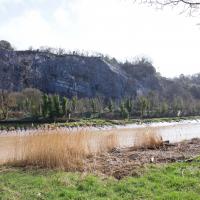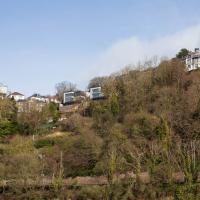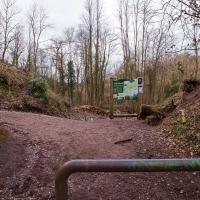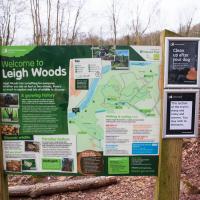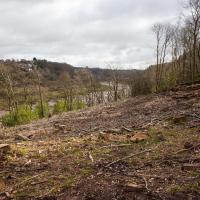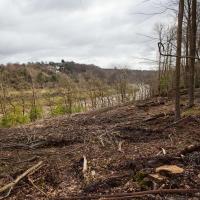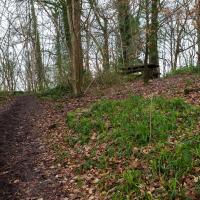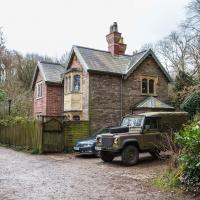Tagged: land-lot
Leigh Woods Walk
14 Mar 2021
An enormous walk today, or at least it felt enormous. My feet are sore, anyway. I started off recreating a couple of local historical photos in Hotwells, but then headed for my traditional walk along the towpath in the Avon Gorge to the far extreme of Leigh Woods, up and through the woods to the height of the Suspension Bridge, finally crossing into Clifton Village for a well-deserved vanilla latte.
I say "traditional" because this used to be a very regular route for me, first walking, years and years ago, and later jogging—this route combined with a circuit of the Downs on the other side used to be my way of making sure I was fit to do a half-marathon (I did six of them in total, between 2010 and 2014).
I miss the routine of this walk, even though it's a long way and it used to pretty much wipe me out when I did it—I'd come back home and collapse and do very little for the rest of the day. But perhaps that's what Sundays are for, and I should try to remember that.
Doing this walk regularly was quite a meditative experience. Not so much of that today, but once I got to the further extreme of the towpath, where the roar of the Portway traffic on the other side of the river dwindles and I turned into Leigh Woods to climb ever closer to birdsong and further from rushing cars, I did seem to recapture a little of the feeling of previous walks. (I would say my mind cleared, but I was mentally singing along to Life Without Buildings' The Leanover for most of the wander. There are worse songs to have stuck in one's head, though; it's a great track...)
Anyway. Apparently the walk made me more likely to ramble in words, too. I'll stop now :)
I've explored the quarry on the other side there, but only later found out that it also used to be a tennis court (see next pic.)
I think this may be some of the non-native tree clearance mentioned in this Bristol Post article from September 2020.
Stephen Eyres, head of forestry and land management for Forestry England in West England, said: "This felling operation will significantly change the appearance of the Avon Gorge, for a while it will look stark and bare whilst it sits fallow for a year.
"It gives us a fantastic opportunity to replant next winter with native trees.
"We are very pleased to be able to plant a small amount of the Bristol Whitebeam, one of eight native trees of the genus Sorbus that are endemic to the Avon Gorge.
"This species has been carefully propagated from seed collected in the Avon Gorge specifically for us to replant here in Leigh Woods."
Tree surgeons will clear small areas of non-native trees such as red oak, Japanese larch and western hemlock, which have reached maturity.

